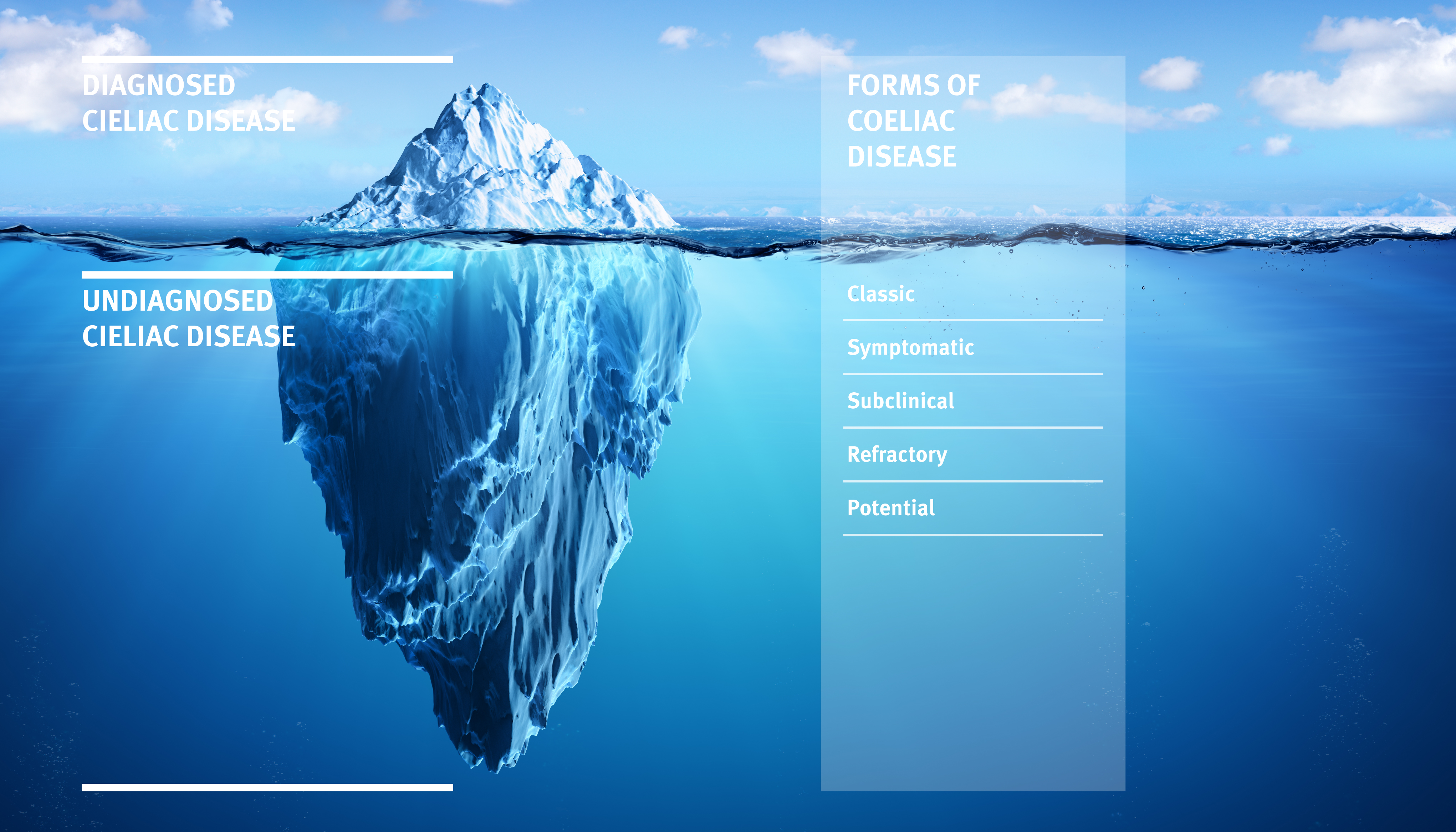Coeliac disease is one of the most common gastroenterological conditions in the world. Data from screening studies reveals that approximately 1% of the UK population is affected.
Coeliac disease was long regarded as a rare childhood disease. 20 years ago the prevalence was between 1:1000 and 1:2000. This data was based on the occurrence of manifest disease and more classical presentation forms of coeliac disease. The discovery of the various coeliac disease-specific antibodies and population screening studies over recent years have revealed that coeliac disease is far more common than previously thought. In common with other autoimmune conditions, it is more prevalent amongst women than in men, with up to twice as many women affected [1].

Rising Incidence
A study published by Catassi and colleagues in 2014 [2] revealed that the incidence of coeliac disease has increased fivefold in the last 25 years. Europe and the United States, where the diet is traditionally based on foods containing gluten, are among the regions with the highest prevalence. The number of young children diagnosed with coeliac disease in the UK has almost tripled over the past 20 years with the diagnosis rate for coeliac disease in the period 2008-2012 75% higher than it was in 1993-1997 [3]. A recent study conducted in a paediatric population in Scotland demonstrated a 6.4 fold increase in incidence over the 20 years between 1990-2009 [4]. An increase in disease awareness and improvement in diagnostic techniques may largely help to explain these changes. We are also now seeing the rise of coeliac disease in traditionally rice based cultures, such as China and India, where there has been the rise of ‘westernisation’ of diet, including the introduction of bread, pasta and pizza [5,6,7,8].
The Coeliac Iceberg
Although it is understood that the prevalence of coeliac disease in the UK is approximately 1%, only 24% of these cases are actually diagnosed. Whilst there has been a four-fold increase in the rate of coeliac diagnoses over the past two decades, approximately 500,000 people remain undiagnosed [5]. Experts sometimes refer to the coeliac ‘ice berg’ when considering this vast number of undetected cases (see diagram below).

The changing picture of coeliac disease
Coeliac disease has traditionally been considered a rare condition of childhood presenting only with symptoms of chronic malabsorption – this is known as ‘classical’ coeliac disease and remains relatively rare. Coeliac disease is now understood to be a common condition presenting most commonly in the 4th or 5th decade of life with ‘non-classical’ symptoms including irritable bowel syndrome-type symptoms alongside extra intestinal symptoms including anaemia, fatigue, headaches and neurological disturbances.
Reference
- Hin H, Bird G, Fisher P et al. Coeliac disease in primary care: case finding study. BMJ 1999;318:164-7
- Catassi C, Gatti S, Fasano A. The new epidemiology of celiac disease. J Pediatr Gastroenterol Nutr. 2014 59 Suppl 1:S7-9
- Zingone F, West J, Crooks C et al. Socioeconomic variation in the incidence of childhood coeliac disease in the UK. Arch Dis Child 2015; 0:1-8
- White LE, Merrick VM, Bannerman E et al. The Rising Incidence of Celiac Disease in Scotland. Pediatrics 2014 132;4:1-8.
- Wu J, Xia B, von Blomberg BM, et al. Coeliac disease: emerging in China? Gut. 2010;59(3):418-419
- Ramakrishna BS, Makharia GK, Chetri K, et al. Prevalence of Adult Celiac Disease in India: Regional Variations and Associations. Am J Gastroenterol. 2016;111(1):115-123
- Gupta R, Reddy DN, Makharia GK, et al. Indian task force for celiac disease: current status. World J Gastroenterol. 2009;15(48):6028-6033
- Makharia GK, Verma AK, Amarchand R, et al. Prevalence of celiac disease in the northern part of India: a community based study. J Gastroenterol Hepatol. 2011;26(5):894-900
- West J, Fleming KM, Tata LJ et al. Incidence & prevalence of coeliac disease and dermatitis herpetiformis in the UK over two decades: Population-based study. American Journal of Gastroenterology 2014; 109:757-768
